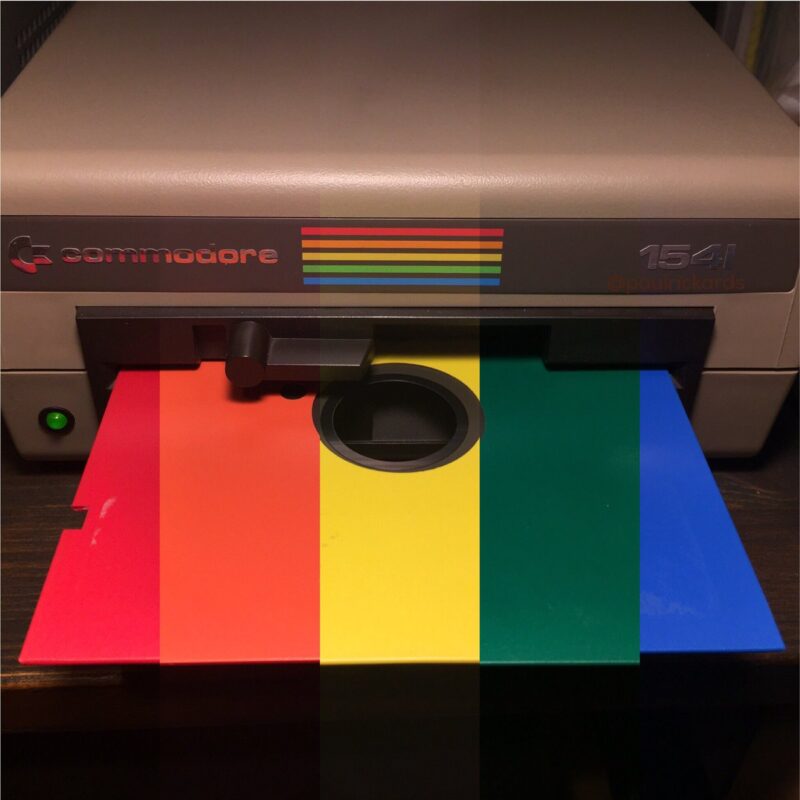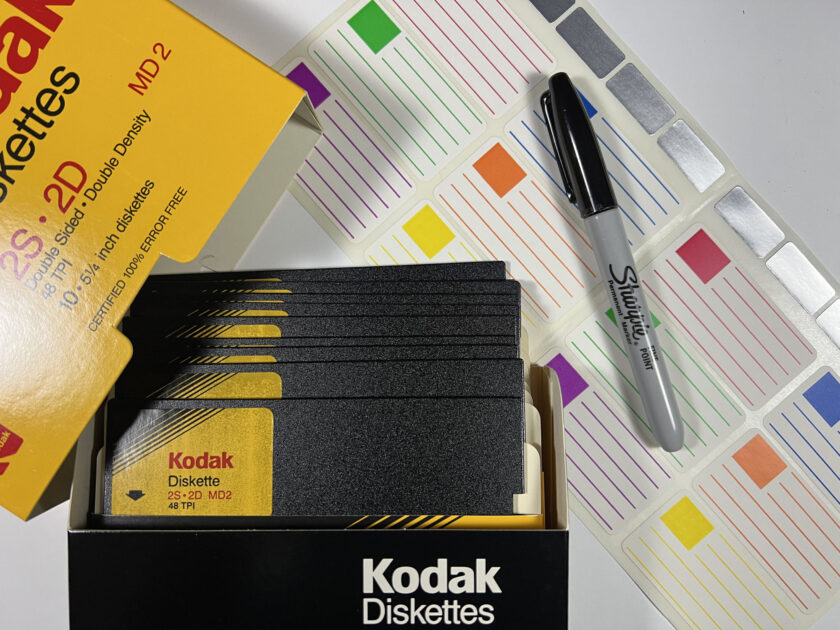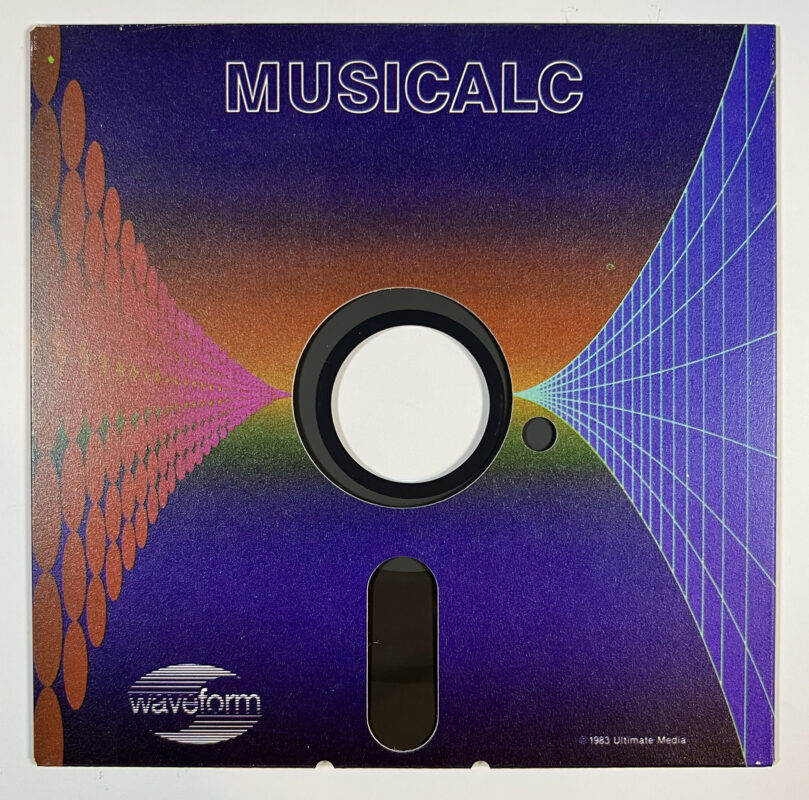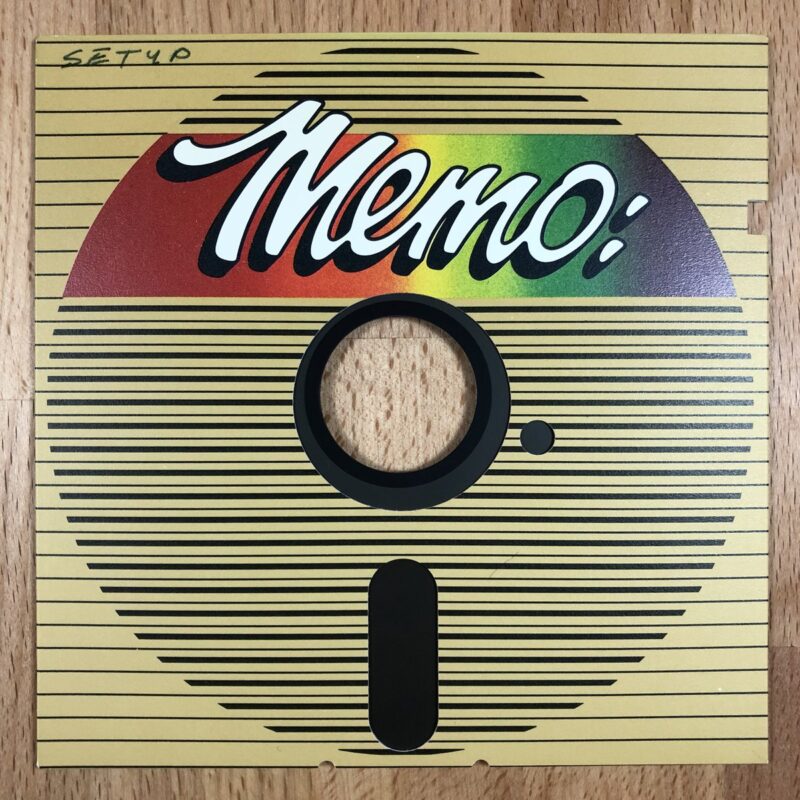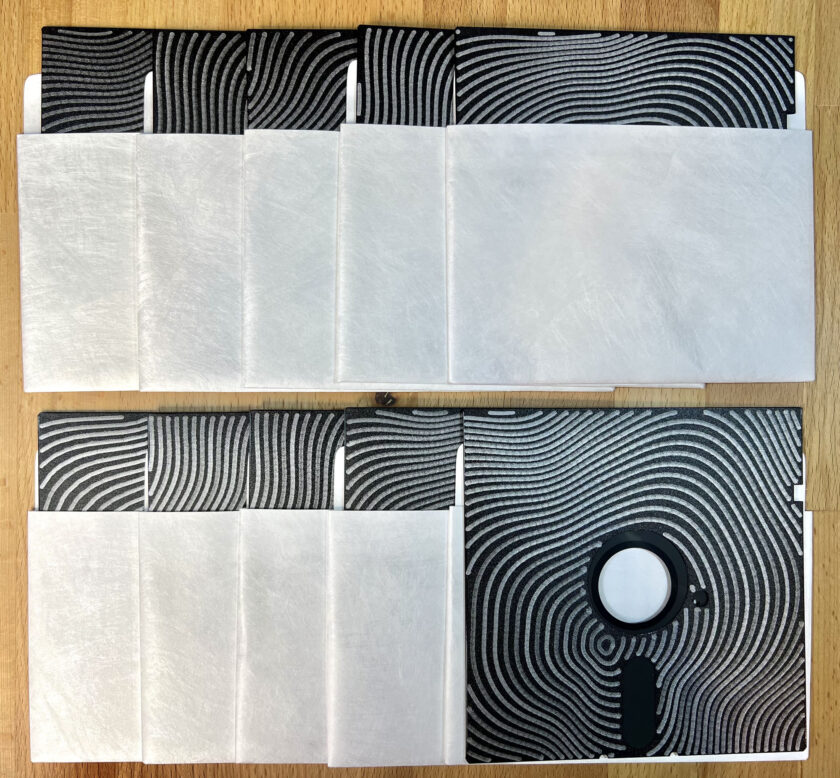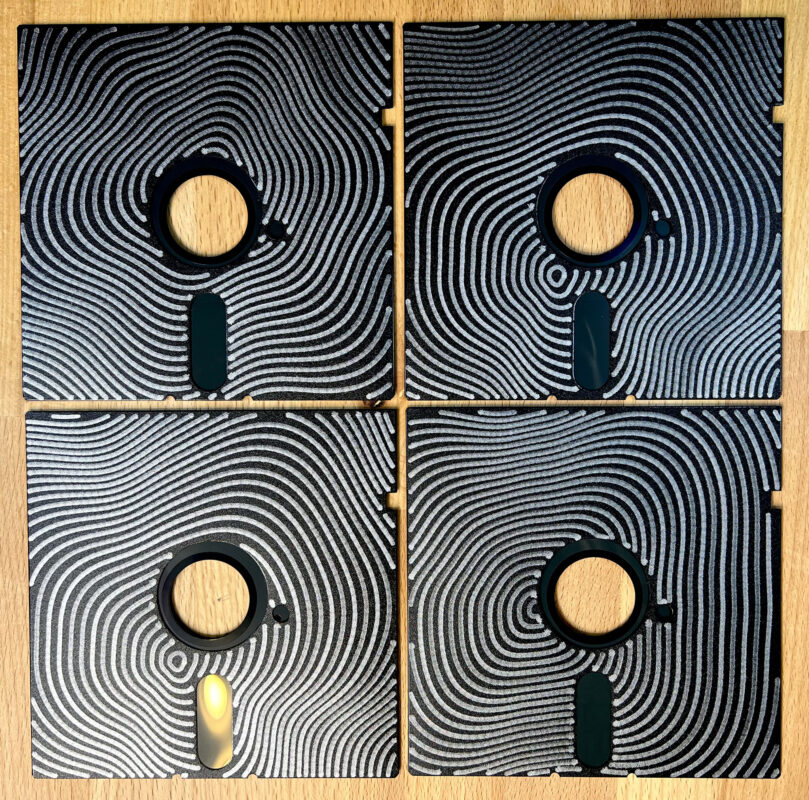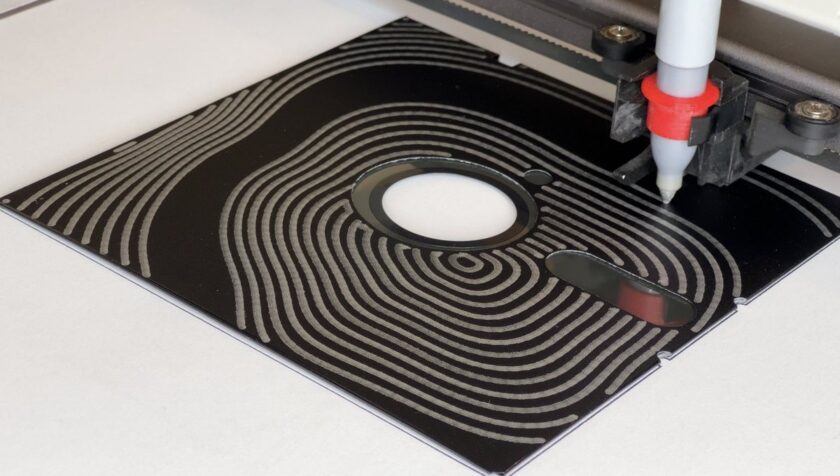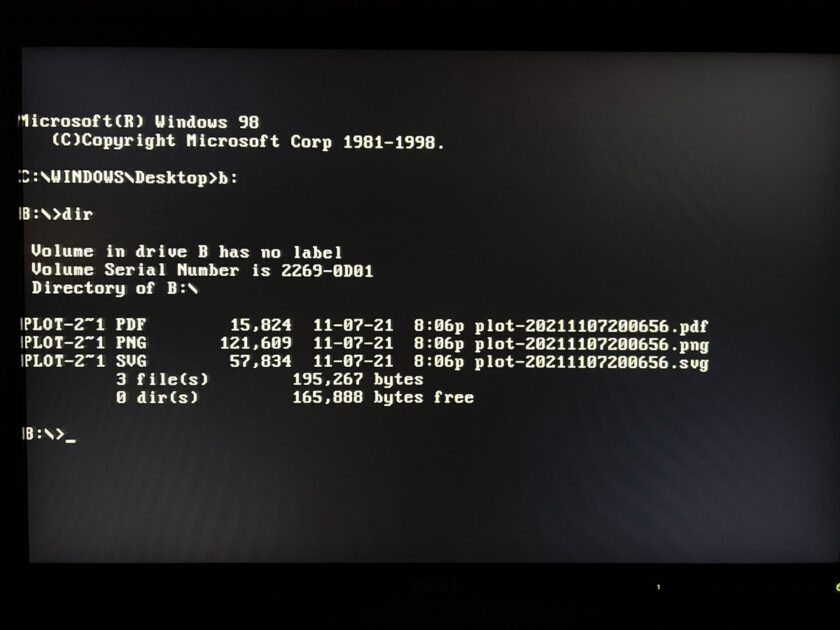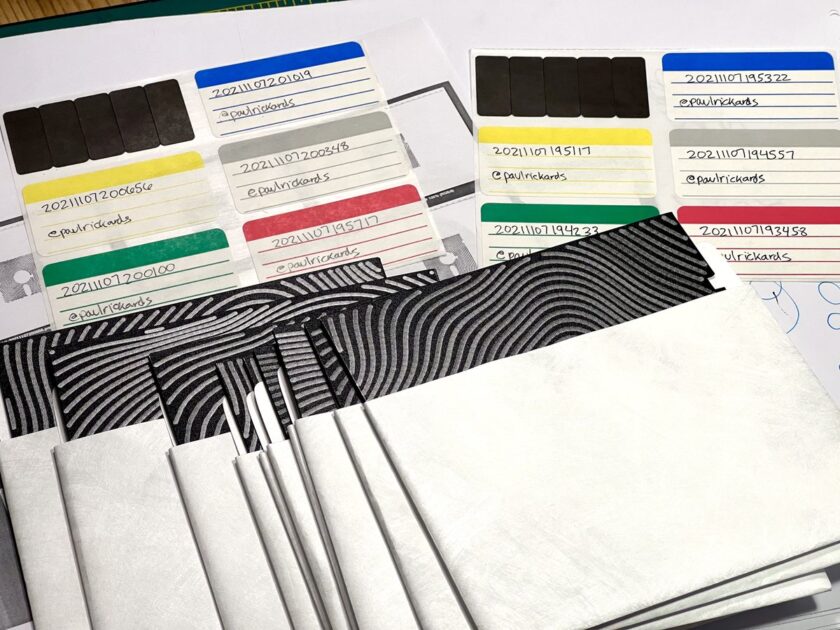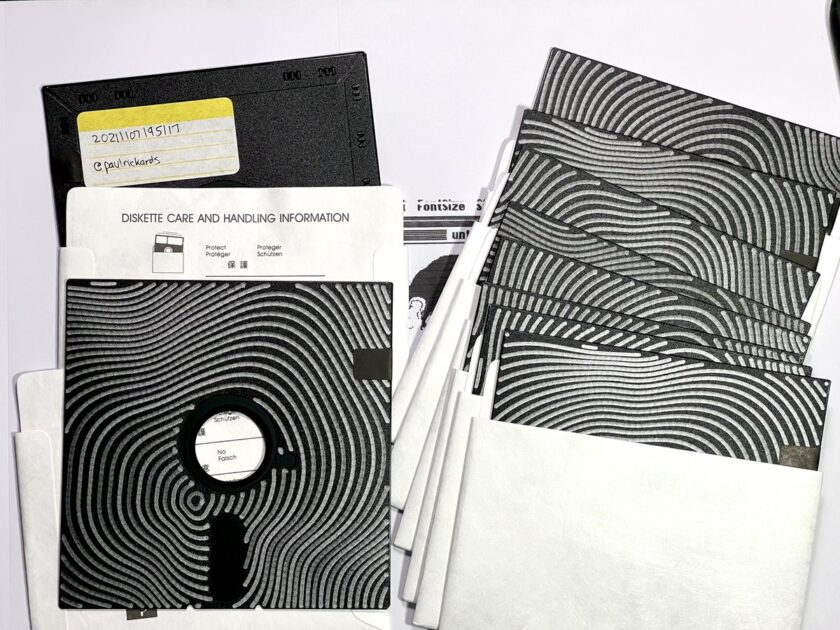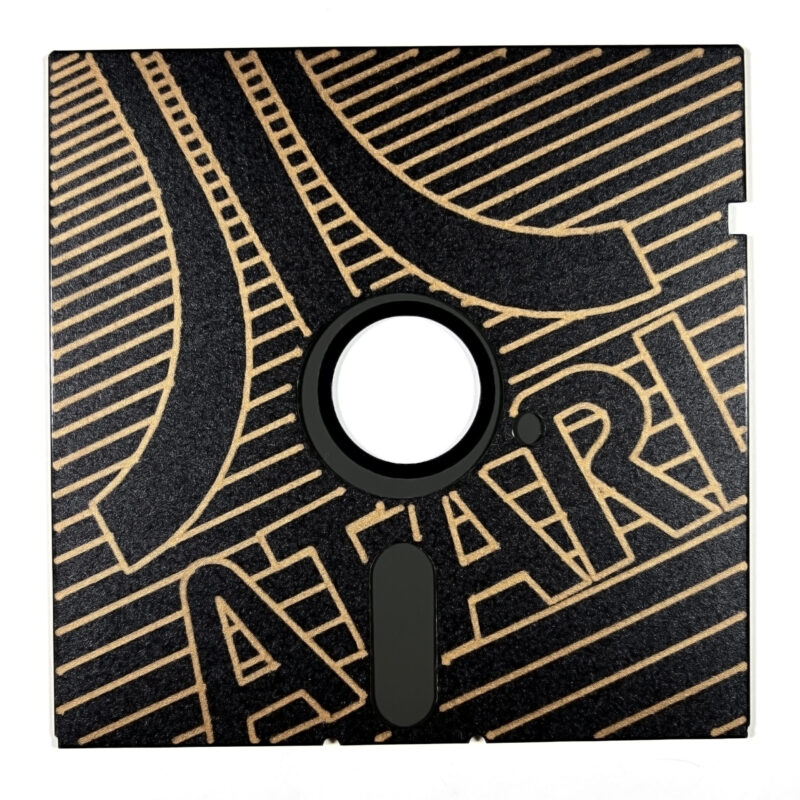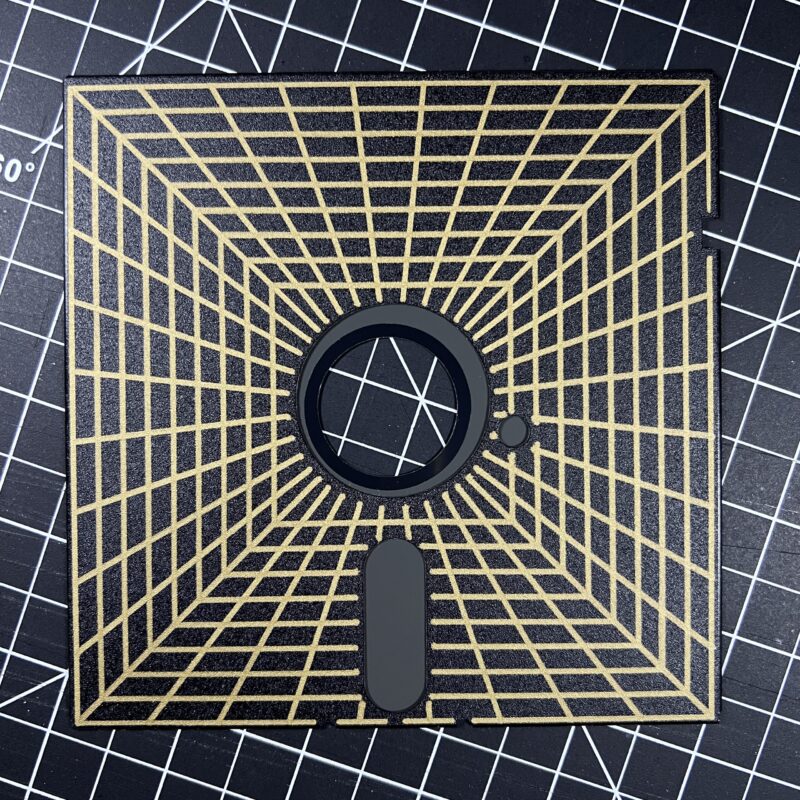In November 2021, I posted a short video on Twitter of my Roland DXY 1150 pen plotter drawing a generative wobbly circle design on top of a 5.25″ floppy disk. A few people responded that they would buy one of the floppies. This got me thinking about the medium of a floppy disk that I was using.
Being a retro computing enthusiast, I have a large cache of 5.25″ blank disks that I can use, so it only felt natural to try pen plotting on a floppy disk.
Typically, floppy disks are labeled on the front at the top so it’s visible while in the sleeve.
If the disks are blank, you would typically use a label provided in box. Because the disk jacket itself is flexible, it was always recommended to use a felt tip marker to label the disk as a pen or pencil may put a permanent dent in the disk or worse, harm the “cookie” inside which would cause read errors and/or data loss.
There is another extreme example.There was a company called ChromaDisk in the early 1980s that would do full color printing on the front and back of the floppy disk, in some rather elaborate designs. They provided services to software vendors for custom prints (see MusiCalc example) as well as a line of blank floppies (see Memo example) of their own. These disks really stood out, especially if they were in a clear plastic sleeve.
All of this made me realize that using the disk as a medium to plot on left the disk available to still be used for it’s intended purpose– to hold data.
And because of the nature of generative art, there’s a (nearly) unlimited supply of variations possible through randomness and other changes to the code.
I could create a design, plot it on top of the floppy disk, and then save the unique drawing to the disk itself. In this way, the floppy disk is both the artwork as well as the means to make more copies of the same artwork.
I think of the work as self referential? Recursive? Meta? A token?
I asked Twitter what this was called. Folks responded with Quines (a computer program that generates the source code for itself) or Tupper’s Self-Referential Formula (a formula that, when graphed, shows the formula on a graph). ChatGPT suggests this is an example of a “physical-digital hybrid artwork or a physical-digital hybrid object.”
I decided to do a short run of one box of 5.25″ floppies (10 disks). I cast the idea out to Twitter for folks who were interested in purchasing one for $25 to contact me. I sold all 10 disks in under 24 hours.
I set about creating each disk by generating a design and then plotting it on top of the disk. I used my Roland DXY-1150 vintage pen plotter since in its original life, it was used to plot cable management tags so the plot bed was modified with some extra depth to accommodate a floppy (which is much thicker than paper). I chose a silver Sharpie Metallic marker on top of black disks so the design really pops with this stroke width.
I then loaded each disk into my old Windows 98 machine with 5.25″ drive and copied the PDF, PNG, and SVG of the artwork onto the disk.
Next came time to sign the disks. I usually sign the work itself, but in this case a label felt more appropriate. Labels usually go on the front, but I didn’t want to obscure the artwork itself so I put them on the reverse side. I also write-protected each disk to ensure the contents weren’t accidentally erased.
I also created custom blank postcards for patrons to include, along with other goodies. The floppy disks were packed in envelopes and each envelope received a unique sticker on the outside of that particular iteration of the design contained inside.
Several people responded once their floppies arrived but it’s not clear if any of the new owners have the means to read the disks themselves. This is perhaps the weakness (or strength?) of this medium in that it uses an archaic storage medium that few people have the means or skill to retrieve anymore.
However, even if the floppy disk is unreadable, there’s still a physical record of the contents plotted on the top, just like a label would do. Perhaps better than a label which can only describe the contents. In this way, you get to see the contents.
If you’re interested in purchasing a plotted floppy, you’re in luck. I have a shop where I sell pen plotter works, including floppy disks.
Have thoughts about this floppy plotting project? What is your best description of this type of work? Let me know in the comments.
